There’s a python living in my rain gutter.
Or maybe inside my ceiling. We’re not quite sure. We haven’t seen the snake yet, but we know it’s up there, slithering amid drying eucalyptus leaves and basking in the radiant heat from the tin roof.
I saw the snake about a month ago, on the first warm day as winter fades into spring here in Australia. I went out to check the mail in the early afternoon. My mailbox was empty, but there was a 7-foot-long carpet python basking on the warm asphalt on the driveway. Hello, snake!
We stared at each other for a few minutes, and then it slithered into the neighbor’s storm drain.
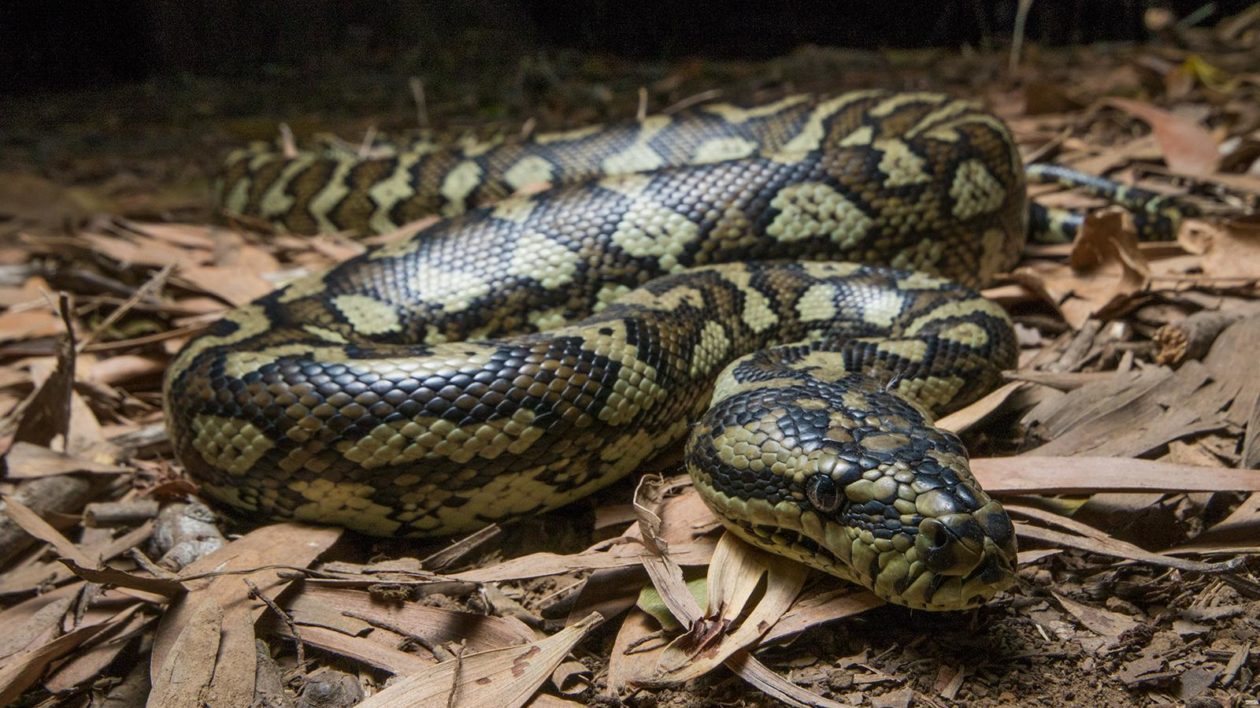
Fast forward to last week, when I found a large hunk of snakeskin in my front yard. About 10 inches long, it was thick as my wrist and mottled with dark and light patches. Thrilled that the python was still around, I turned back to the house to shout for my partner, Troy.
Out of the corner of my eye, I saw something fluttering in the breeze above me. It was another piece of snakeskin, caught on the power line that runs from within reach of a low tree to our roof. Oh.
My eyes followed the powerline to the rain gutter, and then the rain gutter over to our balcony bird feeder, where a mob of rainbow lorikeets are feeding noisily. Oh. Oh no.
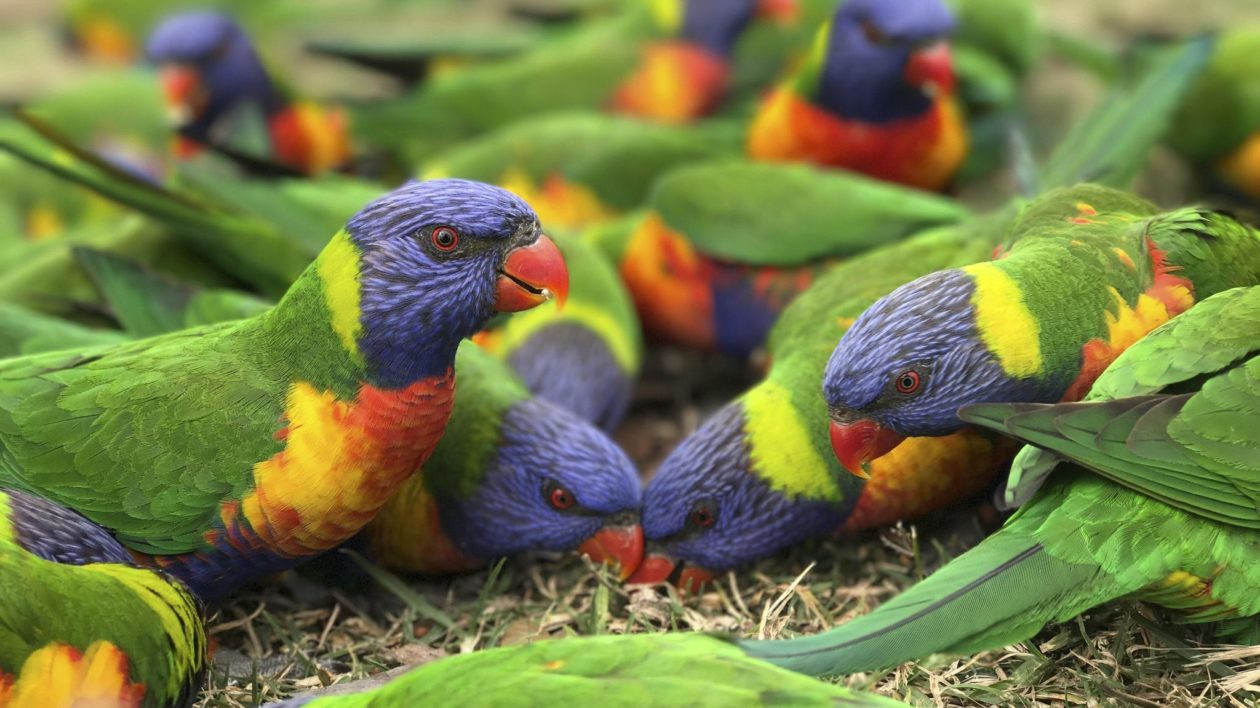
Apparently, this isn’t the first time a python has taken up residence in the house. Our neighbor confirmed that another large python — perhaps even the same snake — used to hide in the rain gutter before we moved in, laying in wait for the parrots who like to bathe in the water after storms.
I have a bad feeling that we may end up feeding more than just the birds.
Normally, I wouldn’t flinch at the thought of a snake catching its next meal. I grew up devouring Attenborough-narrated wildlife documentaries where the lion always eats the gazelle. I’m comfortable with predators and prey, ecological food chains, the circle of life.
Except… spring is here, and with it young birds. Our feeder has been busy for weeks, with parrots and pigeons scarfing down seeds and fruit for their mates incubating eggs or downy young. Then just last week the first juveniles appeared, on tentative wings, their feathers still scraggly in spots.
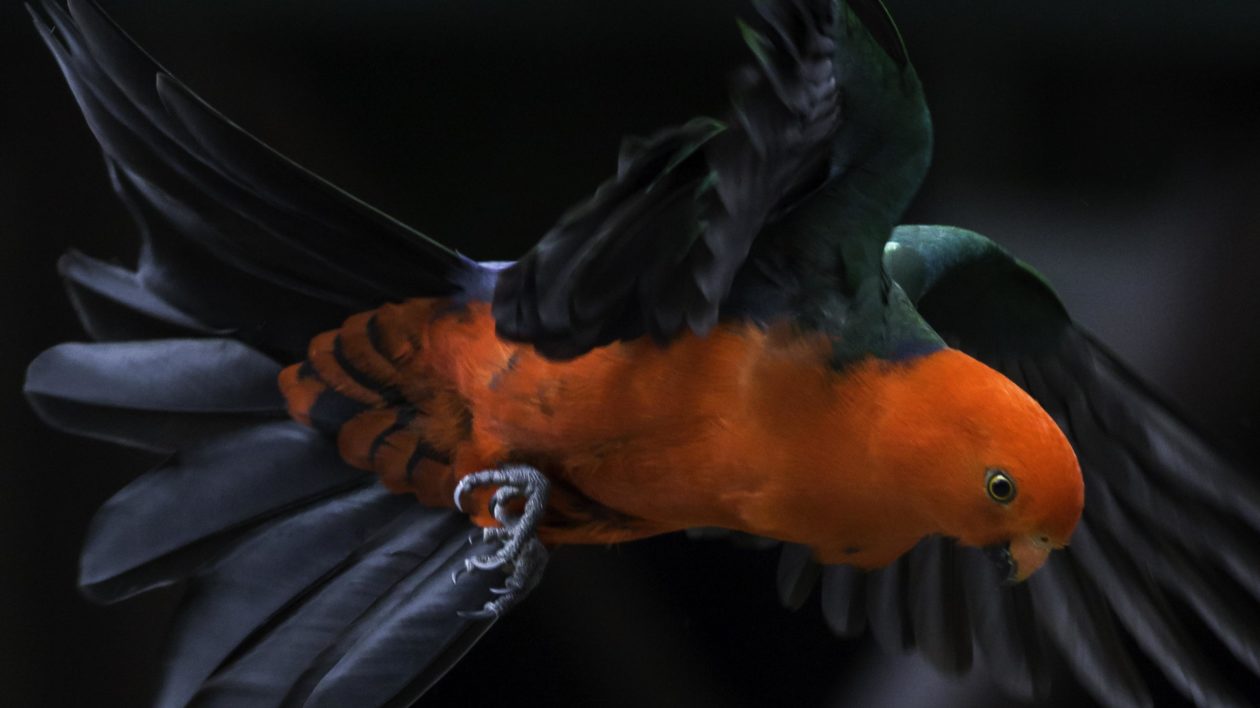
There’s a young male king parrot we call Fruit Loop, who toddles right up to the window to watch us watch him. We stare at each other, mutually curious, face and feathers inches from the glass. He earned his nickname when he flew in and hung upside-down from the side of the house, peering in the window and chattering to himself for a full minute.
Fruit Loop flies in each day in the early afternoon, perching in the tree and squeaking his head off until his mother arrives. Then they feed together, occasionally joined by an adult male, Tomato, named for his favorite food that he steals from our garden.
And then there are the lorikeets, a raucous rainbow of color. They feed in pairs, followed by a post-snack cuddle, or in garrulous groups of up to 15 birds. They’re the bullies of the bunch, constantly squabbling amongst themselves and chasing away all other birds who dare to show up. They chatter and strut, head-butting other birds out of their space, and sometimes they seem to dance in a bizarre and hilarious display of head-bobs and body rolls, shimmies and shakes.
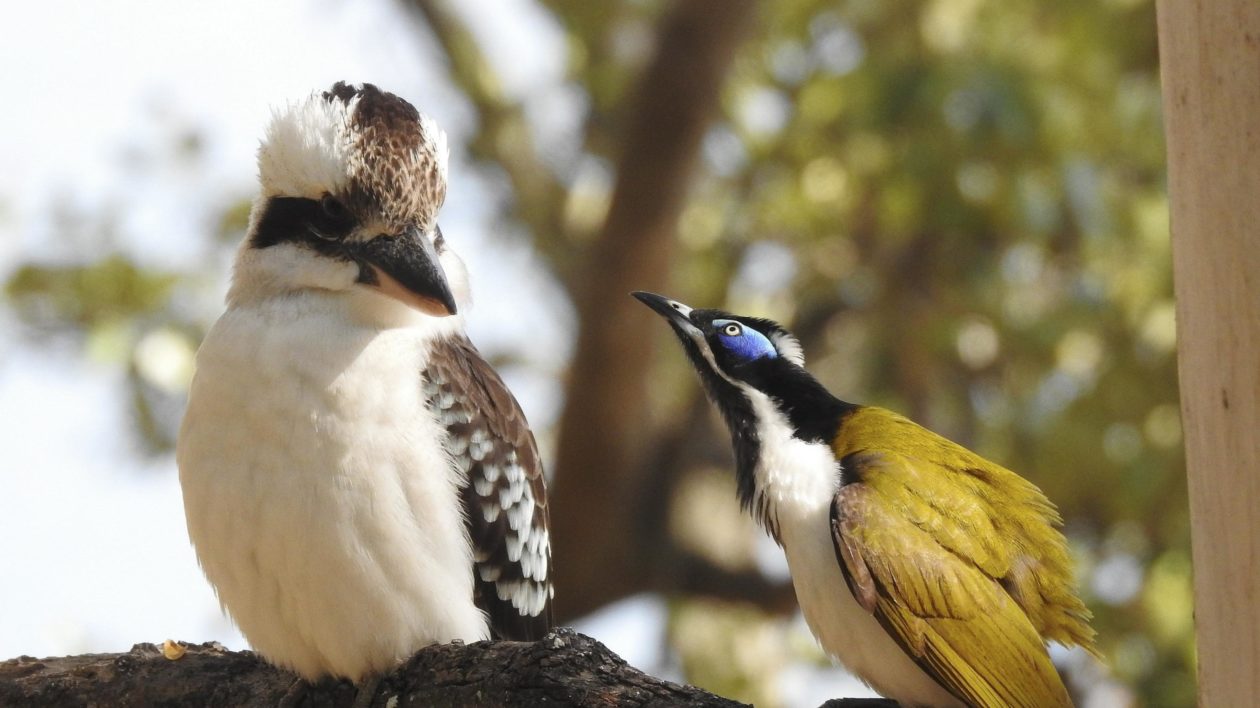
The only birds that can intimidate the lorikeets are the massive white-headed pigeons, who show up in mobs of 5 to 6 birds in the early evenings and finally give the lorikeets a taste of their own medicine.
My favorites are the delicate pale-headed rosellas, bright yellow, red, and blue like a primary school color-wheel. They too appear in pairs, with the parent birds chewing seeds and then delicately regurgitating them back into their little one’s mouths. It’s disgusting, and delightful.
And I can’t forget the currawongs and kookaburras, who appear like clockwork in the late morning for their snack, a piece of leftover fruit or meat each.
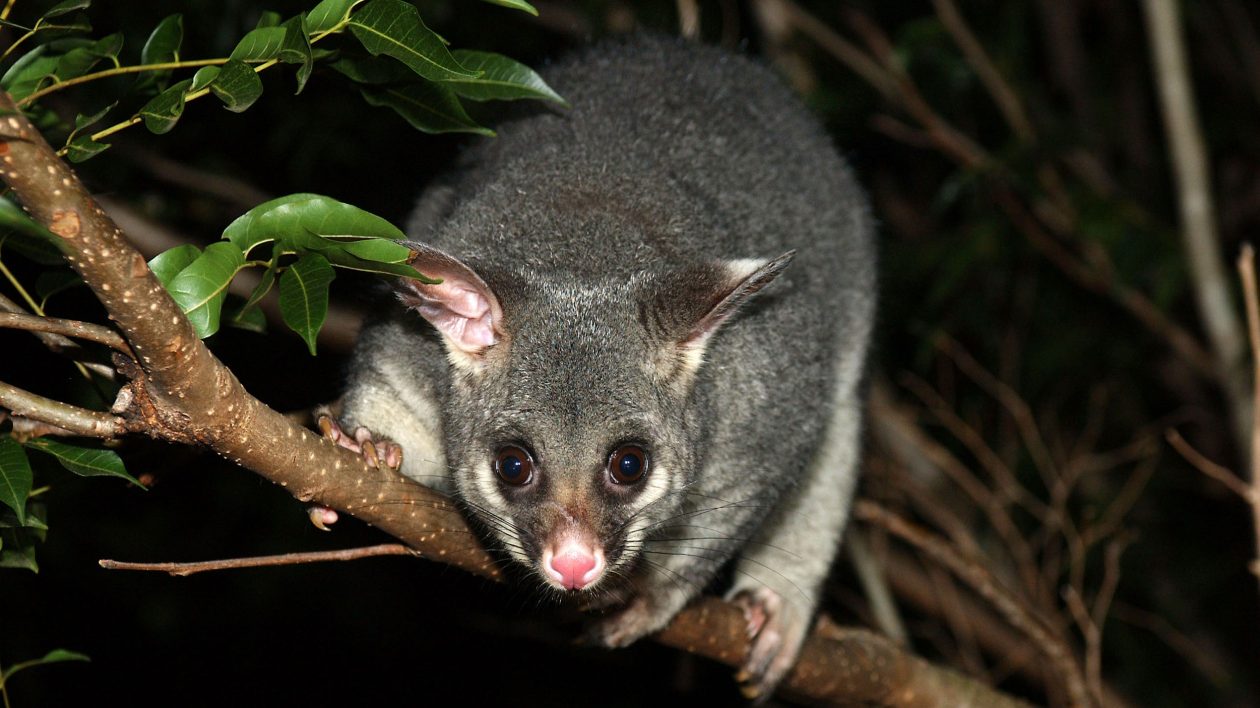
And so now I wait, wondering when my birdwatching will take a dark turn.
Will the python pluck a parrot from our feeder? Or will it snatch the baby brush-tailed possum that scarfs down any leftover seeds each evening, waddling alongside its mother?
I can’t help but hope our python will slide into the roof instead, and take care of any curious rodents that try to make their home there.
Until then, I have my very own slow-motion wildlife drama, taking place just out of sight.
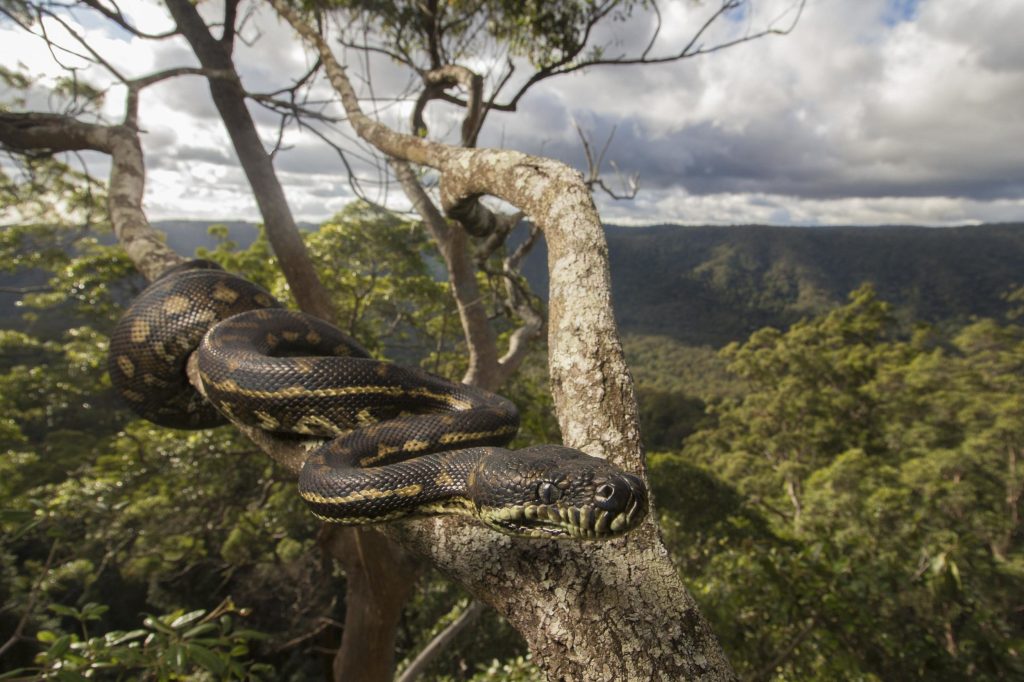



THANK YOU for sharing your wonder-full wildlife-backyard experiences! More please.
Have enjoyed many of your columns, Justine. This is my favorite of all. Great descriptions of a yard I can only dream about. I have Australian family but am stuck here in Nebraska at the beginning of winter. Keep up the great work!
Thanks Linda! It’s great to have you as a reader. 🙂
Some of those creatures you’re feeding (the laughing kookaburra, for example) might well be more numerous as a result of your largesse, and their inflated numbers might well be resulting in the demise of young pythons. So if a python grabs an occasional bird at the feeder, perhaps justice is done. Or maybe just the beginning of justice. The hot-blooded homeothermic kookaburra eats more, and more frequently, by proportion than does the poikilothermic python. I love the first photo that goes with this story. In 1996 at Lamington National Park, I grabbed a carpet python from the road near O’Reilly’s seconds before a speeding car would have flattened it. The snake was gorgeous—just like the one in the photo.
Great writing! Birds are beautiful – love hearing about all your different visitors – even the snake!